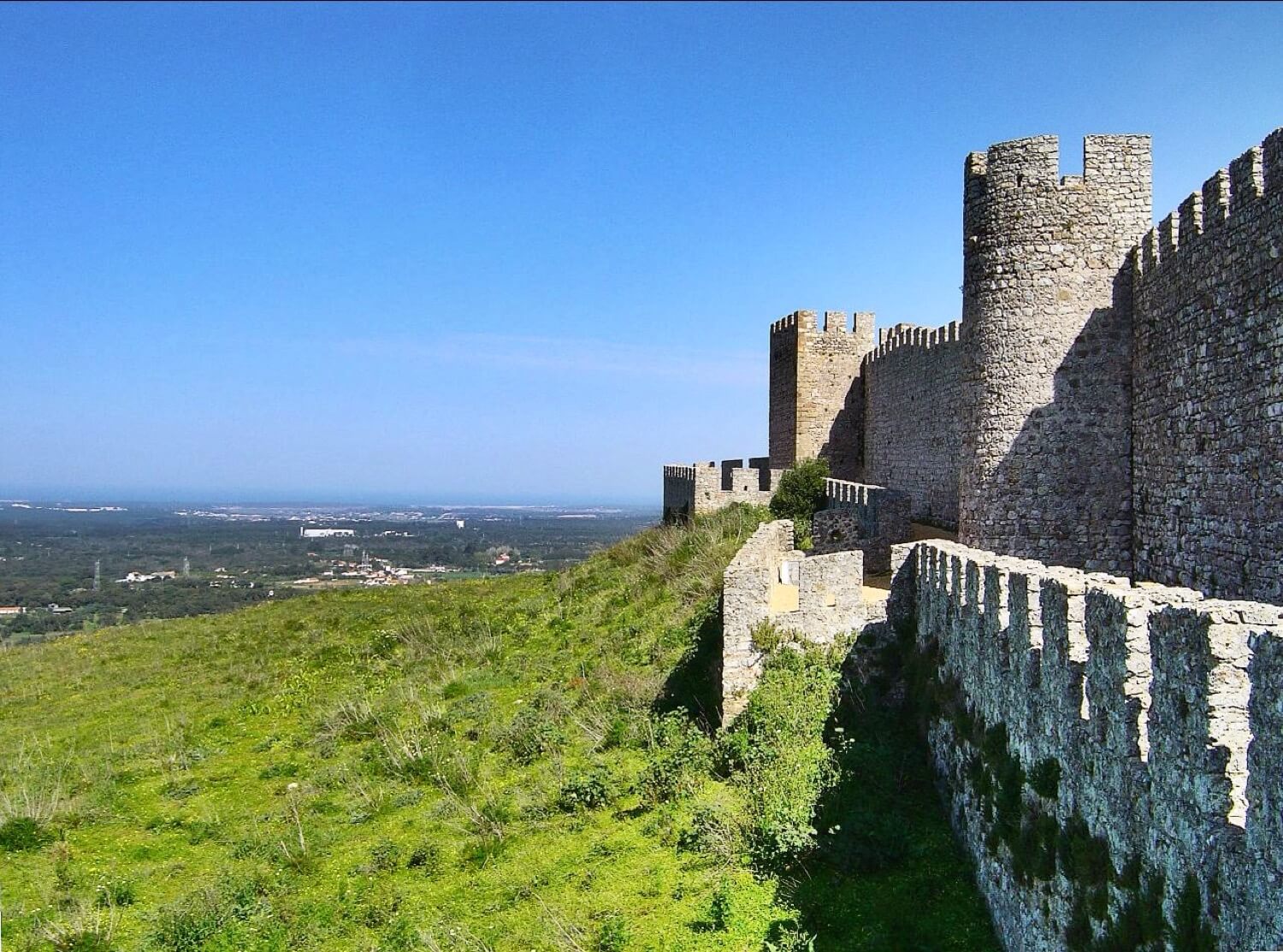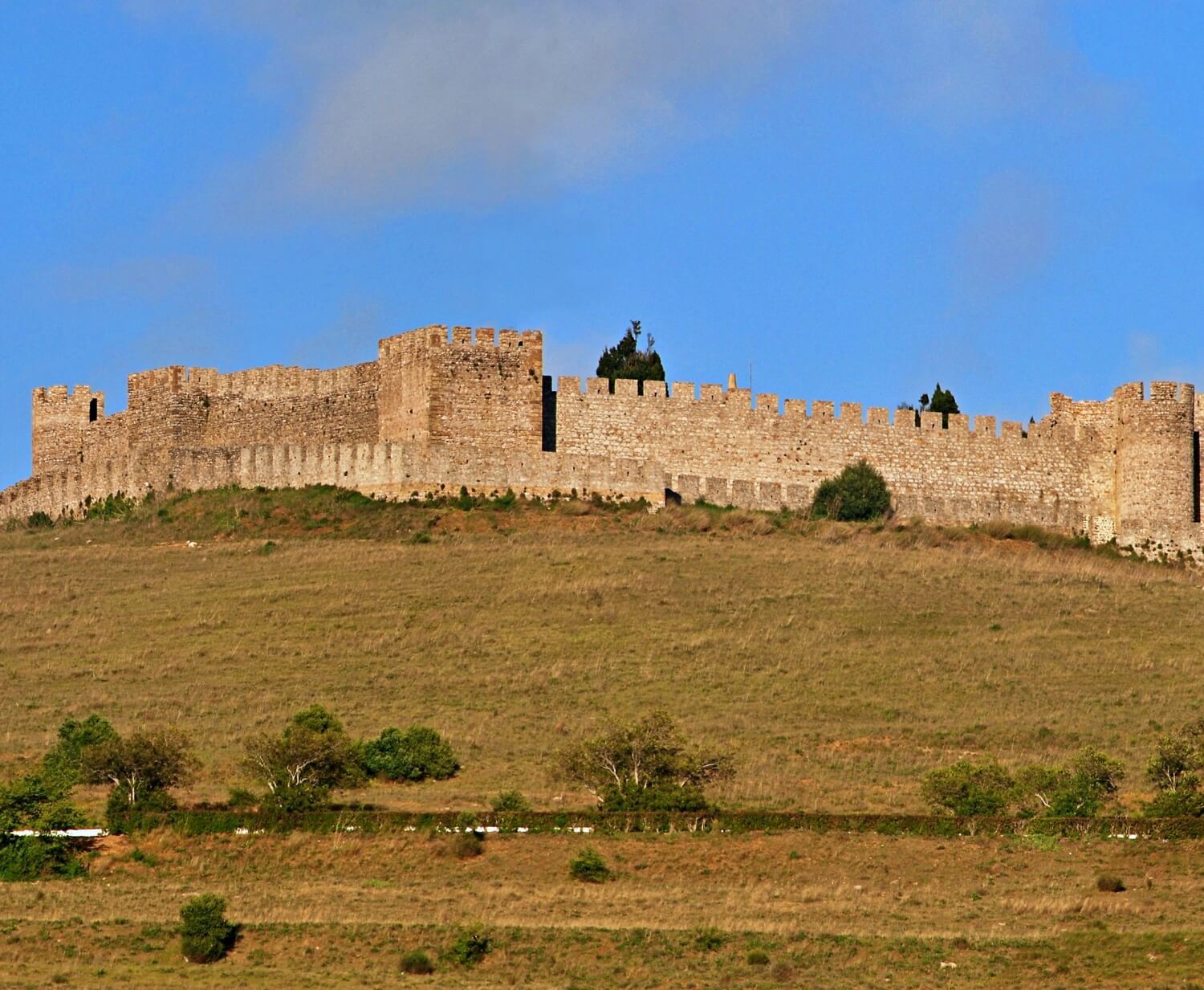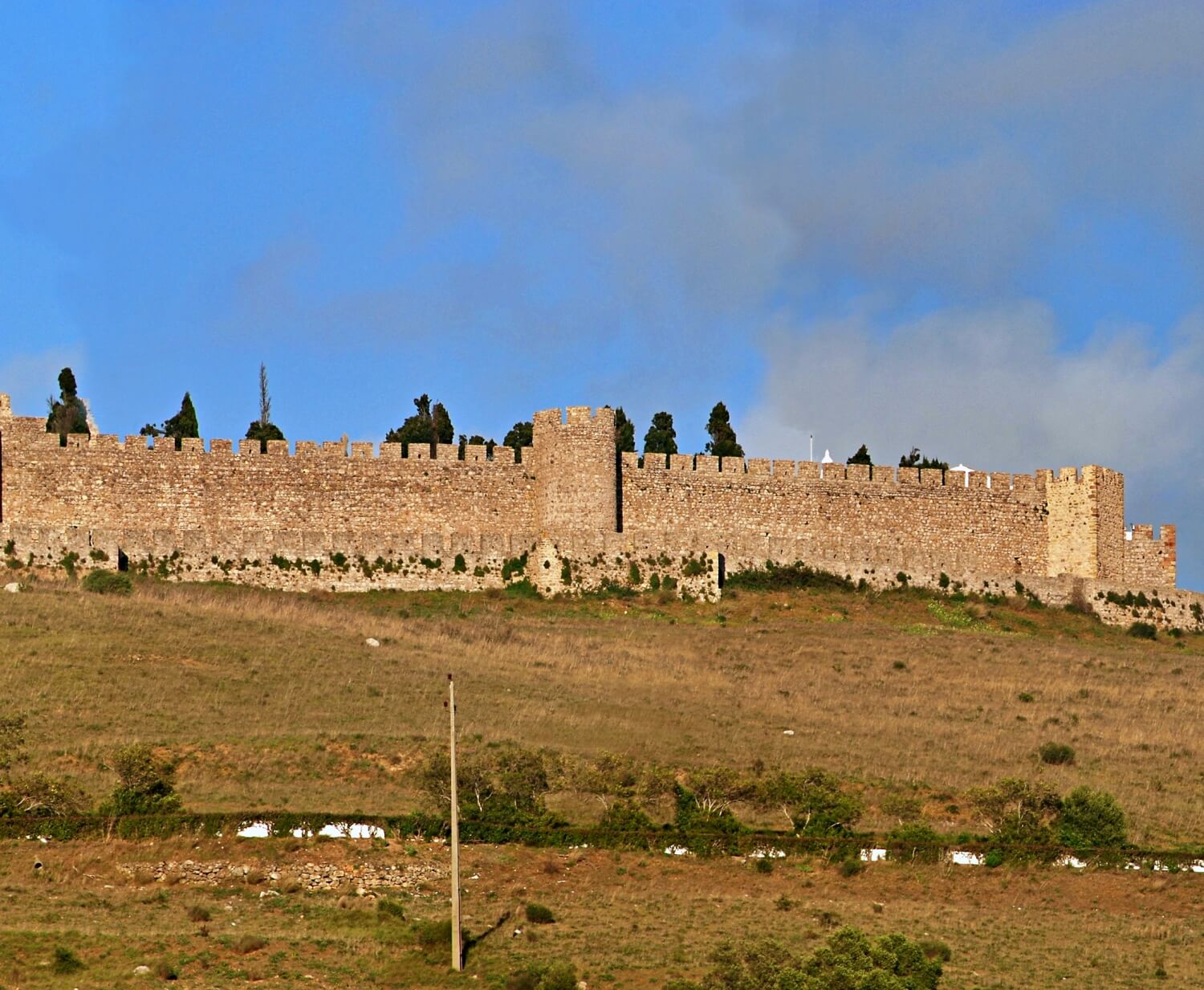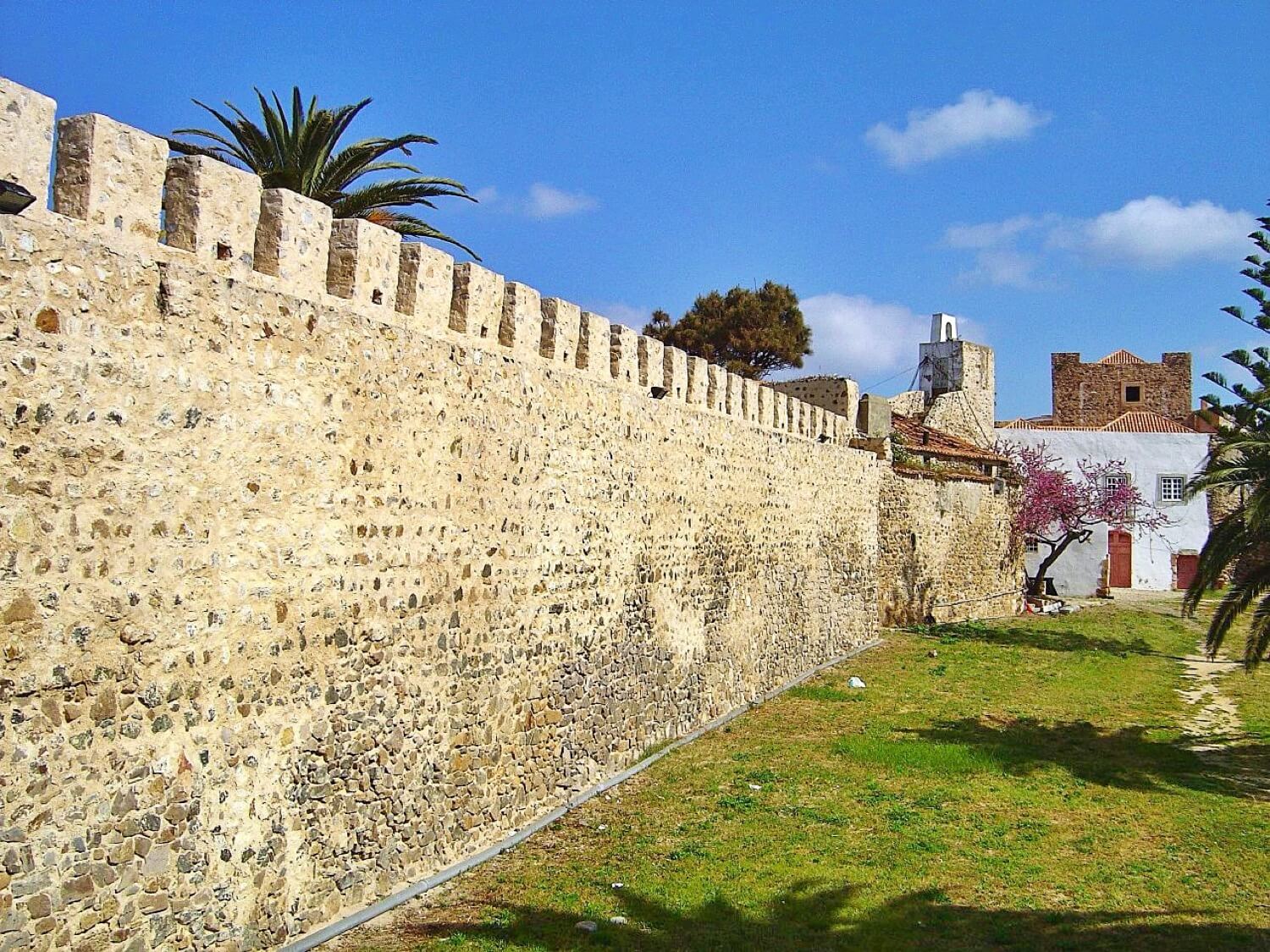Castelo de Santiago do Cacém
Santiago do Cacém Setúbal Portugal
castle, chateau
Castelo de Santiago do Cacém
Santiago do Cacém Setúbal Portugal
castle, chateau
Castelo de Santiago do Cacém is a castle in the municipality of Santiago do Cacém, Portugal
O Castelo de Santiago do Cacém, no Alentejo, localiza-se na cidade, freguesia e concelho de mesmo nome, no distrito de Setúbal, em Portugal
Previous names
Castelo de Santiago do Cacém, Castelo de Santiago do Cacém
Description
Castelo de Santiago do Cacém is a castle in the municipality of Santiago do Cacém, Portugal. It is classified as a national monument.
History
Early human occupation of the site dates back to Celtic tribes. During the Roman occupation of the Iberian peninsula, the village was called Mirobriga and included the jurisdiction of Pax Julia (currently Beja) The village was occupied by the Alans during the first decades of the 5th century, then abandoned in the 6th century, when the population relocated to a neighbouring hill nearer to the sea. The new village was successively ruled by the Visigoths, followed by the Moors at the beginning of the second decade of the 8th century, in 712. It was then known as Kassen.
The medieval castle
The castle was built by the moors. During the Iberian peninsula's Reconquista period, Santiago do Cacém was taken for the first time in 1157 in the context of the conquest of Alcácer do Sal by the forces of Afonso I of Portugal (1112–1185). The forces of Almohad caliph Abu Yusuf Ya'qub al-Mansur retook the city in 1190–1191. In 1186, King Sancho I of Portugal awarded the dominions of Almada, Palmela and Alcácer do Sal to the Order of Santiago. The first two had previously been reconquered in 1194, whereas the third remained under Moorish control until 1217. That year, under the reign of Afonso II (1211–1223), Cacém became a definitive possession of Portugal. Its domain was given to the knights of the Order, essentially warrior monks, left to rebuild defences. Since this time the village has been known by its current name: Santiago do Cacém. Its first charter also dates from this time. Under the reign of Denis of Portugal (1279–1325), the castle was in the possession of Vataça Lascaris (Dona Vetácia), nurse and friend of Queen Elizabeth of Portugal. In the period from 1315 to 1336, the domain was returned to the Order of Santiago. During the 1383–85 Crisis, Santiago do Cacém was one of the first towns to support the Master of Avis, since Fernando Afonso de Albuquerque, Master of Santiago, had made available all of the Order's resources to his cause. In 1512, under the reign of Manuel I of Portugal, the Foral Novo was written (an important document relating regional economic and social history). At the time of the Philippine Dynasty, Philip I of Portugal donated the castle to the dukes of Aveiro (1594).
War of the Restoration to present day
The town lost strategic importance after the Portuguese Restoration War, in the 17th century. The castle and its domain returned to crown control in 1759. The old castle was gradually abandoned and fell to ruin. The site's grounds were used as the town's cemetery in the 19th century. The castle was declared a national monument on 23 June 1910. More recently, the Portuguese DGEMN (Direcção Geral dos Edifícios e Monumentos Nacionais) has funded restoration projects.
Characteristics
Santiago do Cacém Castle
The castle is almost rectangular in shape and there are still some remains of the original Moorish fortification. The walls and battlements were reinforced by ten square towers and semi-cylindrical turrets, externally defended by a barbican, also strengthened by turrets. The ancient church of Santiago is integrated into the south-east part of the wall. Original Romanesque and Gothic architecture can still be seen alongside later styles. Carvings of the saint fighting the Moors can be viewed inside the church. Zoomorphic motifs line the south porch. This part of the medieval citadel comprises remains of the original fortress.
O Castelo de Santiago do Cacém, no Alentejo, localiza-se na cidade, freguesia e concelho de mesmo nome, no distrito de Setúbal, em Portugal.
Em posição dominante sobre uma modesta colina, vizinha à orla atlântica e ao porto de Sines, controlava a planície vizinha. Atualmente integra a Região de Turismo da Costa Azul.
História
Antecedentes
A primitiva ocupação humana de seu local remonta a tribos Celtas. À época da romanização da Península Ibérica, a povoação então existente era denominada como Miróbriga, integrando a jurisdição conventual de Pax Júlia (atual Beja).
Ocupada pelos Alanos durante as primeiras décadas do século V, foi abandonada no século VI, tendo a população se deslocado para a colina vizinha, mais próxima ao mar. A nova povoação foi sucessivamente dominada pelos Visigodos e no começo do segundo decênio do século VIII, pelos Muçulmanos, quando passou a ser denominada como Kassen.
O castelo medieval
À época da Reconquista cristã da Península, Santiago do Cacém foi pela primeira vez tomada em 1158, no contexto da conquista de Alcácer do Sal pelas forças de D. Afonso Henriques (1112-1185). Do mesmo modo, seria recuperada entre 1190 e 1191 pelas forças do califa almóada Iacube Almançor quando retomaram aquela cidade.
Desde 1186 Sancho I de Portugal havia doado à Ordem de Santiago os domínios de Almada, Palmela e Alcácer do Sal. As duas primeiras haviam sido reconquistadas anteriormente a 1194; a última permaneceu em posse muçulmana até 1217. Neste ano, sob o reinado de D. Afonso II (1211-1223),Santiago Do Cacém passa definitivamente para a posse de Portugal, quando os seus domínios foram também doados aos cavaleiros da Ordem, passando esses monges guerreiros a ocupar-se da reconstrução das suas defesas. A partir deste período, a povoação passa a ser conhecida por seu atual topônimo: Santiago do Cacém, datando desta fase o seu primeiro foral.
Sob o reinado de D. Dinis (1279-1325), o castelo esteve na posse de Vataça Láscaris, aia e amiga da rainha Santa Isabel, no período de 1315 até 1336, quando regressou aos domínios da Ordem de Santiago.
À época da crise de 1383-1385, foi uma das primeiras vilas a declarar partido pelo Mestre de Avis, uma vez que D. Fernando Afonso de Albuquerque, Mestre de Santiago, havia disponibilizado ao seu serviço, todos os recursos de sua Ordem.
Sob o reinado de Manuel I de Portugal recebeu Foral Novo (1512).
À época da Dinastia Filipina, Filipe II de Espanha doou o castelo aos duques de Aveiro (1594).
Da Guerra da Restauração aos nossos dias
A defesa da vila perdeu importância estratégica após a Guerra da Restauração, na segunda do século XVII. O domínio do castelo retornou à posse da Coroa em 1759. A partir de então o antigo castelo foi progressivamente abandonado e entrou em acentuado processo de ruína. As suas dependências foram utilizadas, no século XIX como cemitério da vila.
No século XX, foi classificado como Monumento Nacional por Decreto publicado em 23 de Junho de 1910. Mais recentemente, foram promovidas intervenções de consolidação e restauro a cargo da Direcção-Geral dos Edifícios e Monumentos Nacionais (DGEMN).
Características
O castelo apresenta planta aproximadamente retangular, conservando os seus muros ainda traços da fortificação muçulmana. As muralhas, ameadas, são reforçadas por dez torres de planta quadrangular e cubelos semi-cilíndricos, defendidas externamente por uma barbacã, também reforçada por cubelos. No conjunto destaca-se a torre de menagem.
No troço Sudeste da muralha encontra-se adossada a antiga Igreja Matriz de Santiago, onde se observam traços do primitivo estilo românico, do estilo gótico e de posteriores remodelações. Em seu interior destaca-se um grupo escultórico em relevo, representando "Santiago combatendo os Mouros". No pórtico sul destaca-se a decoração com motivos zoomórficos.
Na cidadela medieval subsistem vestígios da primitiva alcáçova.
Useful information
Free
Free
Great view
turismo@cm-santiagocacem.pt
Ruins of the castle
-
Nearby castles



